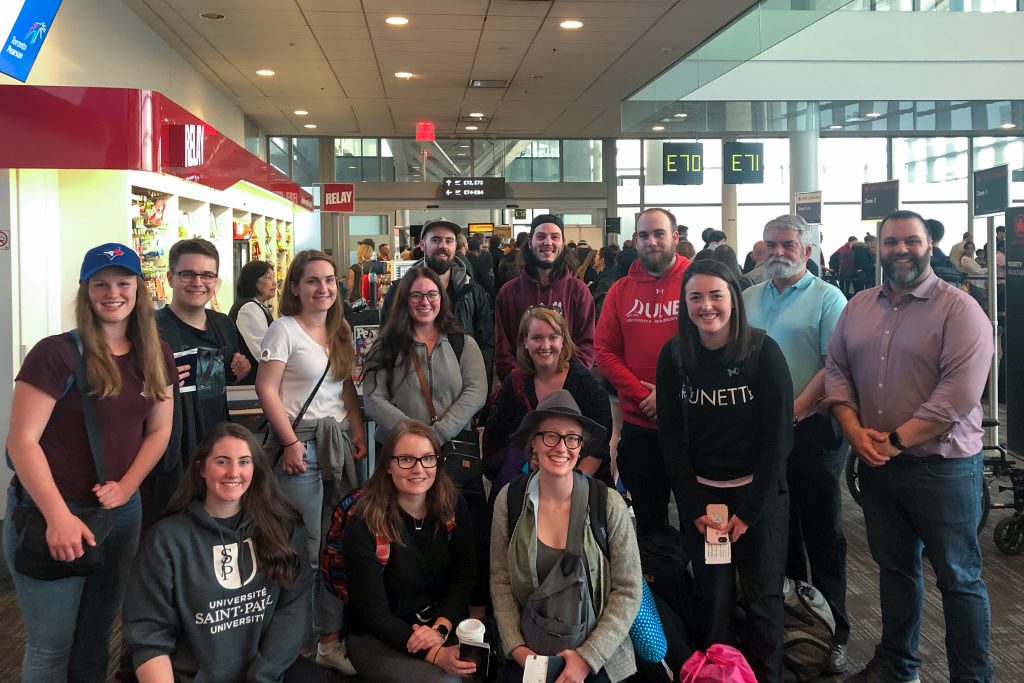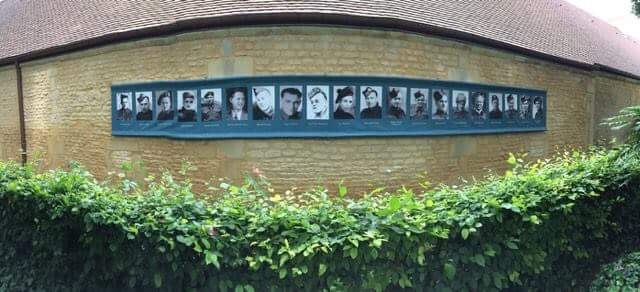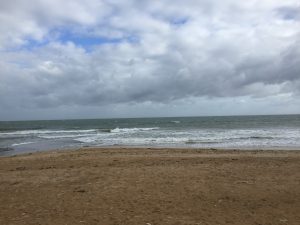On May 25, all twelve of the selected students for this year’s tour met in Toronto (Pearson Airport) with Professor Marc Milner and myself. Below is a group photo before boarding.
 After we land in France (Paris), we will head north to Ypres (Ieper) in Belgium. For more information about our tour and its activities, please consult the tentative schedule below. I say tentative as things could change, the order or we may see something else and miss something in the list, but we sure will be busy! We will definitely go to more cemeteries than those listed below as each student has a soldier presentation to deliver where their soldier is buried.
After we land in France (Paris), we will head north to Ypres (Ieper) in Belgium. For more information about our tour and its activities, please consult the tentative schedule below. I say tentative as things could change, the order or we may see something else and miss something in the list, but we sure will be busy! We will definitely go to more cemeteries than those listed below as each student has a soldier presentation to deliver where their soldier is buried.
Here’s a breakdown of our schedule:
- Day 1 – Fly out to Europe
- Day 2 –Head towards Ypres and see 2nd Ypres battlefield
- Day 3 – Cloth Hall Museum, Hill 62, Langemarck, Passchendaele and Menin Gate Ceremony
- Day 4 – Head back into France, then go to Beaumont-Hamel and Courcellette
- Day 5 – Notre Dame de Lorette, Lens, Vimy
- Day 6 – Amiens, Arras, Canal du Nord, Peronne Museum
- Day 7 – Head to Dieppe, Blue, Red and White beaches
- Day 8 – Green Beach, Dieppe Cemetery, then head off to Normandy and see the Pegasus Bridge
- Day 9 – Arromanches, Longues-sur-Mer, Juno Beach, Juno Beach Centre and Bény-sur-Mer Cemetery
- Day 10 – Utah Beach, Sainte-Mère-Église, Pointe du Hoc, Omaha Beach, La Cambe and Omaha Beach Cemetery
- Day 11 – D+1, Authie / Buron, Bretteville / Putot, Carpiquet, Charnwood
- Day 12 – Operation Spring, Operation Totalize
- Day 13 – Dday ceremonies
- Day 14 – CBF Ceremonies (1430 – Canadian Garden at the Memorial Museum, 1530 – Place de l’Ancienne Bourcherie, 1630 – Abbaye d’Ardenne
- Day 15 – Tractable, Falaise, St Lambert-sur-Dives, Mont Ormel, Bretteville-sur-Laize Cemetery and Polish Cemetery.
Keep an eye out for student posts as they should be posting to this blog on a daily basis. Thanks for taking an interest in our students and this year’s tour.
Written by: Jérémie LeBlanc


